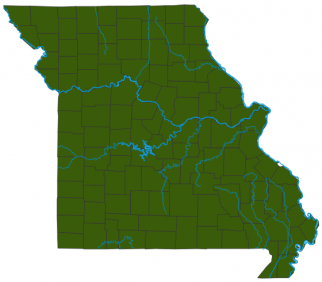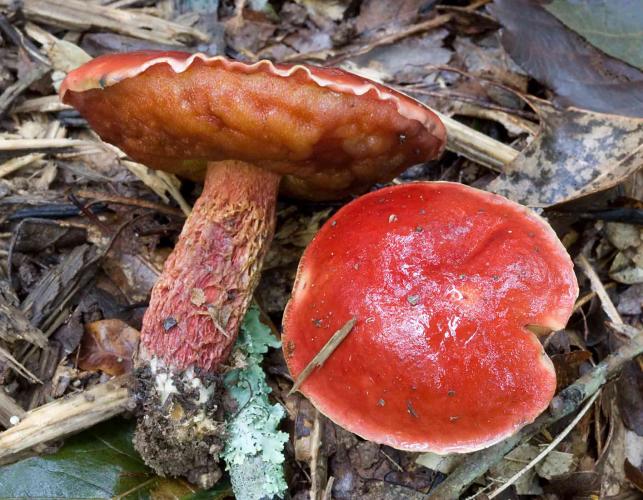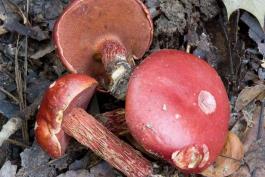
Blood red cap with red pores; red, webbed stalk; all parts bruise blue. Grows scattered on the ground in oak woods. June–October. Cap convex becoming flat; blood red; texture sticky, slimy; flesh is yellowish, instantly bruising blue. Pores small; round; deep red, bruising blue. Stalk usually straight, sometimes curving at the base; blood red, with yellowish raised webbing; bruises blue; texture webbed. Spore print olive brown. Spores magnified are smooth, elliptical.
Lookalikes: Other Boletus species, some of which may be poisonous. Avoid eating boletes with orange to red pores, and those that bruise blue: “Pores of red—may put you to bed!”
Cap width: 2–6 inches; stalk length: 1½–4¾ inches; stalk width: ½–1 inch.

Statewide.
Habitat and Conservation
Grows scattered on the ground in oak woods.
Status
Not recommended for eating. Although Frost’s bolete is actually an edible mushroom, it is not recommended because it could be confused with other, poisonous red-pored boletes.
Life Cycle
This species is mycorrhizal: It exists most of the time as a network of cells (mycelium) connected to tree roots, in a symbiotic relationship with the tree. In fact, many trees fare poorly without their fungal partners. When ready to reproduce, the mycelium develops the mushroom—this is the reproductive structure. In boletes, spores are produced in the pores under the cap and are released to begin new mycelia elsewhere. The mycelium of a mushroom can live for decades.
Human Connections
Mushrooms decorate nature the way wildflowers do, adding to our pleasure on hikes. Like wildflowers, even the smallest of fungi can turn out to be strikingly beautiful. Discovering these wonders can bring out our childlike sense of awe.
Ecosystem Connections
This is one of the many fungus species that help nourish forest trees through a symbiotic connection with tree roots. The netlike fibers of the fungus multiply the roots' ability for absorbing water and nutrients. In return, the tree shares nutrients with the fungus.




Mushrooms are a lot like plants, but they lack chlorophyll and have to take nutrients from other materials. Mushrooms are neither plants nor animals. They are in a different kingdom — the fungi. Fungi include the familiar mushroom-forming species, plus the yeasts, molds, smuts, and rusts.
Always be cautious when eating edible mushrooms. Be absolutely sure of the ID, and only eat a small amount the first time you try it to avoid a reaction..





















